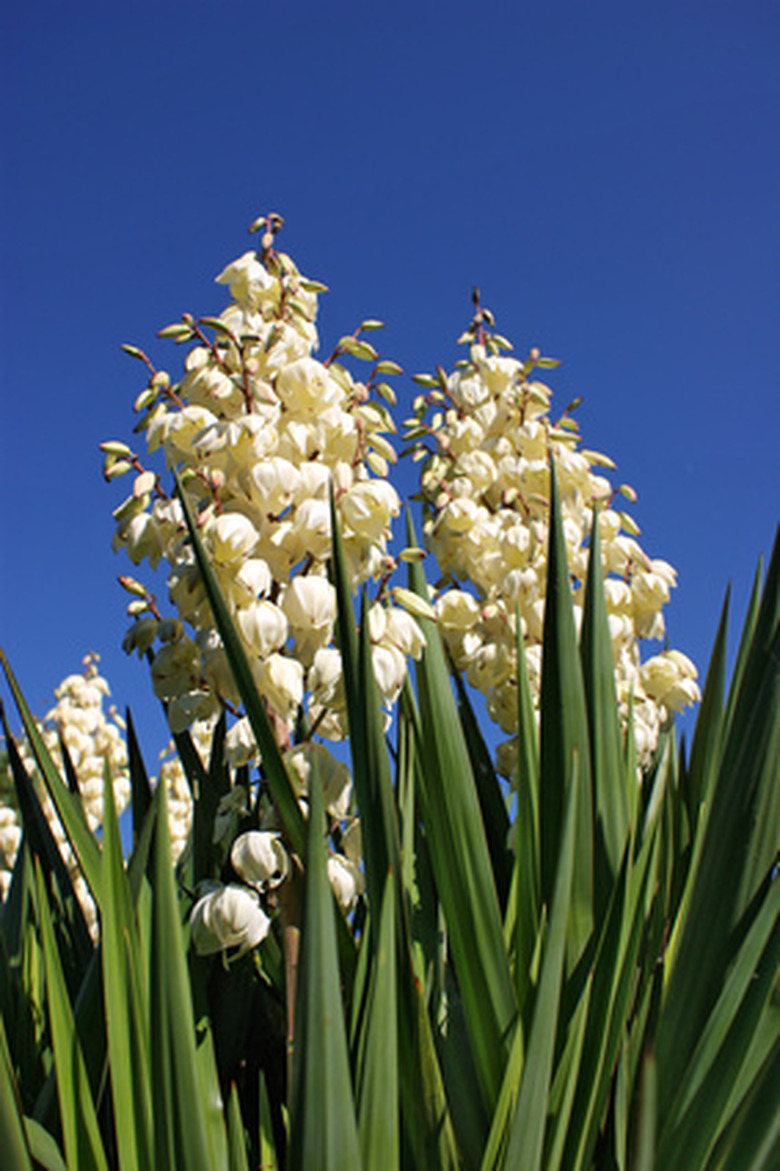How To Take Cuttings From Yucca Plants
Things Needed
- Pruning shears or sharp knife
- Planting pot
- Cactus soil mix
- Spray bottle
Yuccas are heat-tolerant, dry soil-loving desert plants, and members of the Agave family. There are 40 species in the Yucca genus, all flowering plants, most occuring in the desert Southwest region of the United States. If you want to produce offspring from your yucca, and you live outside the range of the only known pollinator, the yucca moth, you will either have to hand pollinate your yucca or propagate it with cuttings. Yuccas with trunks, such as Yucca aloifolia, are the easiest to propagate with cuttings. Take the cutting in late spring or early summer.
Step 1
Cut 6 inches from the tip of the yucca. Avoid cutting from both very young canes and old canes.
- Yuccas are heat-tolerant, dry soil-loving desert plants, and members of the Agave family.
- If you want to produce offspring from your yucca, and you live outside the range of the only known pollinator, the yucca moth, you will either have to hand pollinate your yucca or propagate it with cuttings.
Step 2
Remove the leaves from the bottom half of the cutting and set it in a shady place until it has formed a callus on over the area in which it was cut. Don't be concerned if the cutting appears to be wilting or drying.
Step 3
Pour cactus-growing soil into a planting pot and run water over it until it drains from the bottom of the pot. Let the pot sit while the soil drains completely.
Step 4
Create a 3-inch hole in the soil and insert the cutting. Use your hands to push the soil and firm it around the base of the cutting.
Step 5
Place the yucca cutting in an area that remains between 65 and 95 degrees F and receives filtered sunlight.
- Remove the leaves from the bottom half of the cutting and set it in a shady place until it has formed a callus on over the area in which it was cut.
- Use your hands to push the soil and firm it around the base of the cutting.
Step 6
Allow the cactus mix to completely dry prior to watering and then lightly mist the top inch of soil. Do not get water on the cutting. The yucca cutting will have roots within six months.
Tip
It is normal for some of the foliage to turn brown or die. As long as most of the top foliage remains green, the cutting will root.
